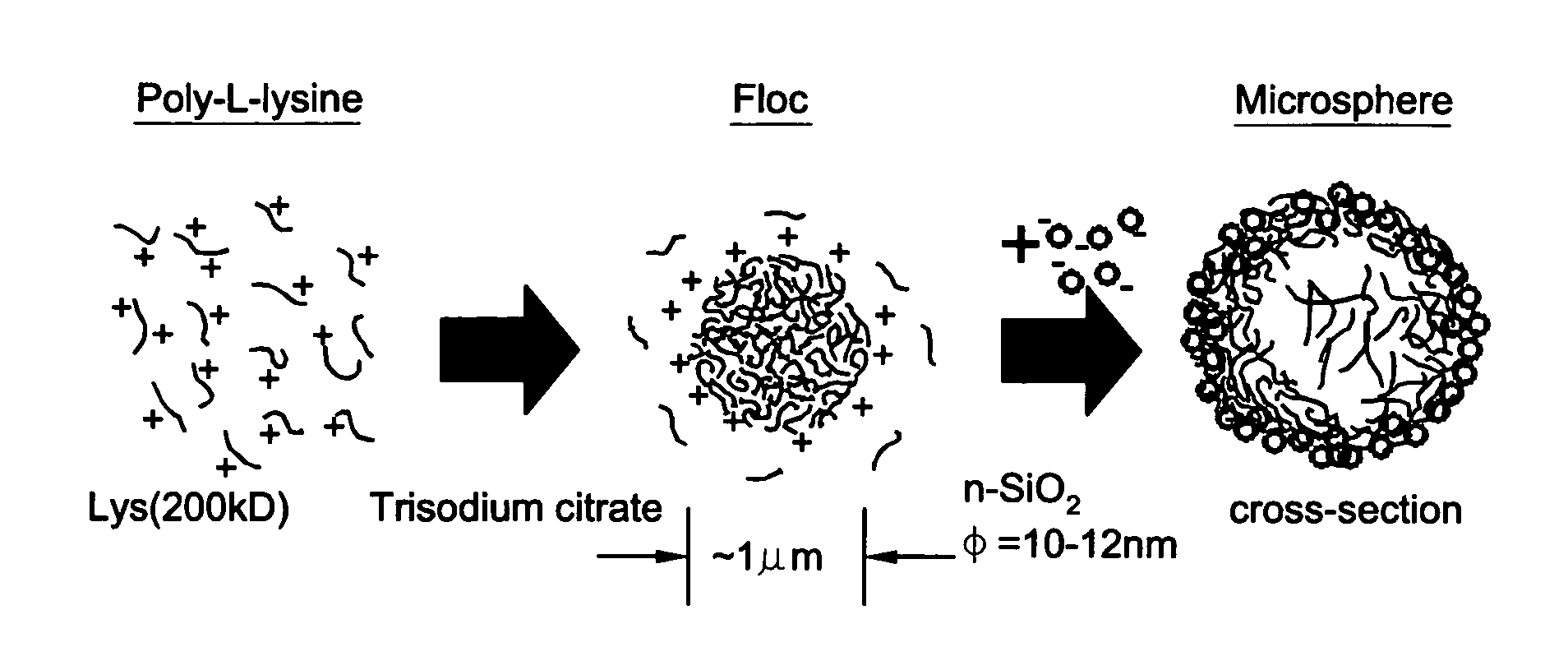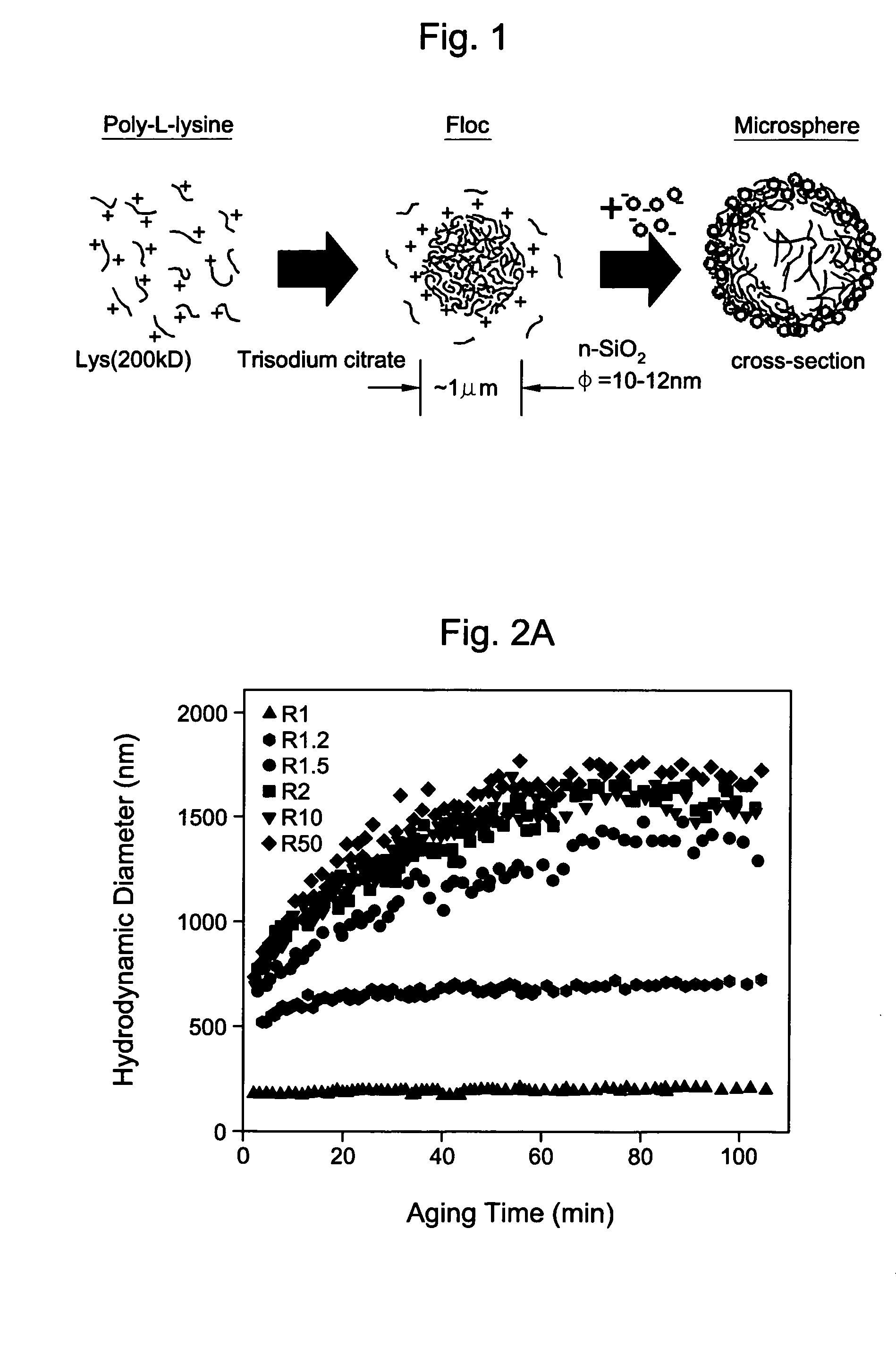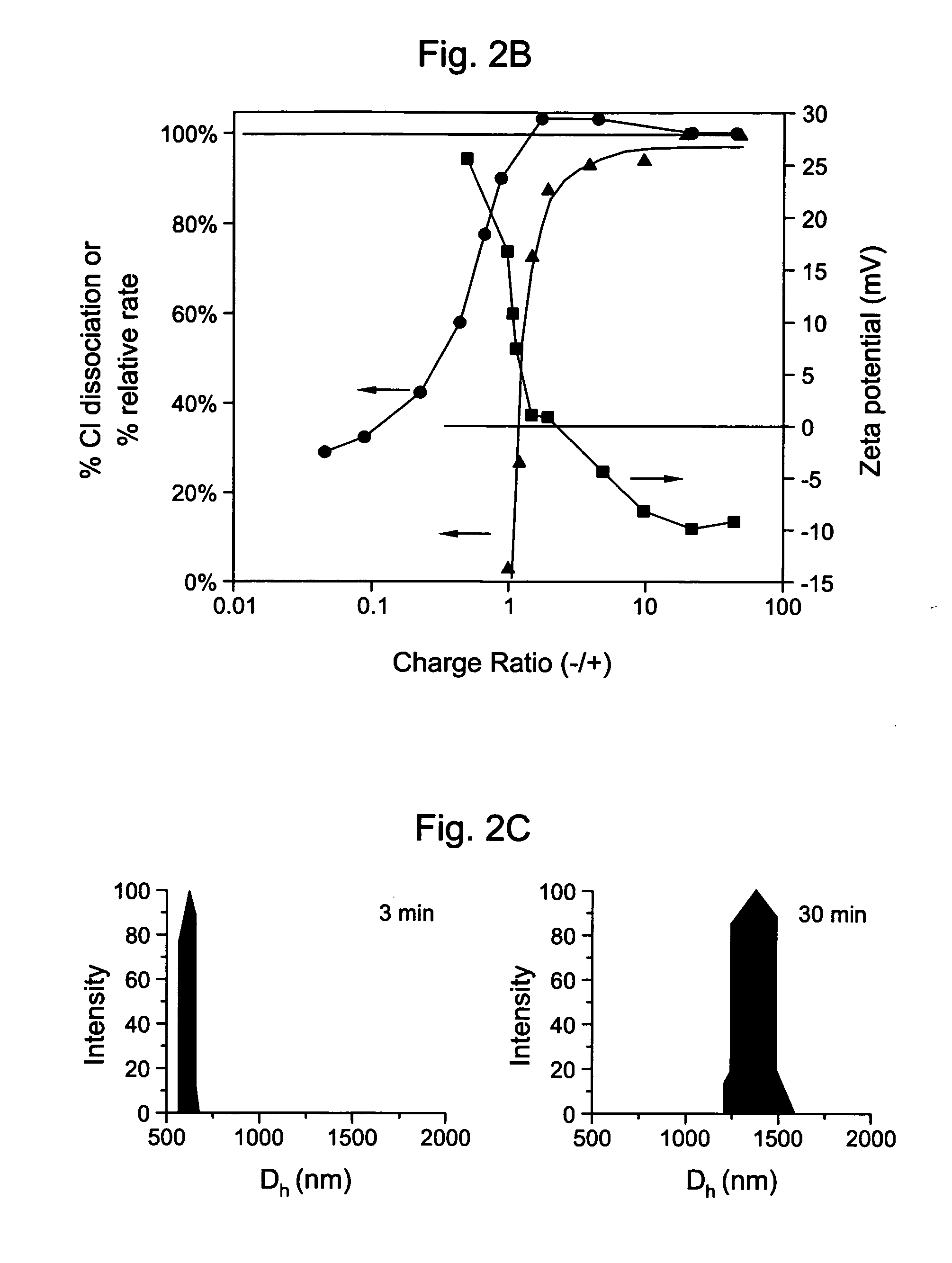Method to fabricate microcapsules from polymers and charged nanoparticles
a nanoparticle and polymer technology, applied in the field of well-structured materials fabrication, can solve the problems of bilayer shells, labor-intensive processes, lack of robustness, etc., and achieve the effect of economic and environmental favorabl
- Summary
- Abstract
- Description
- Claims
- Application Information
AI Technical Summary
Benefits of technology
Problems solved by technology
Method used
Image
Examples
example i
Microcapsule Formation Using poly(L-lysine) (222 kDa), Trisodium Citrate and SiO? Nanoparticles
[0052] An aqueous solution of poly-L-lysine (MW=222 kDa, HBr salt form) was prepared with a concentration of approximately 2.0 mg / ml. 21 μl of this polypeptide solution was taken in a 1.5 ml microcentrifuge tube and to it 125 μl of 2.14 mM aqueous solution of trisodium citrate was added and then vortex-mixed for 10 sec The positive / negative charge ratio R in the solution was 4. Dynamic light scattering (DLS) was used to monitor the size of the spherical aggregates formed. The DLS analysis showed that the aggregates are of ˜1 microns average hydrodynamic diameter. To form the silica hollow spheres, 125 μl of a sol containing SiO2 nanoparticles (Snowtex O, Nissan Chemicals; 20.4 wt % solids, pH 3.4, 13±3 nm diameter as measured through DLS) was added immediately to Solution A and vortex mixed for 20sec (Solution B). The solution A was occasionally aged for various times to see the changes i...
example ii
Microcapsule Formation Using FITC Conjugated Poly(L-lysine) (68 kDa), Trisodium Citrate and SiO2 Nanoparticles
[0054] In order to get more insight into the mechanism, poly-L-lysine attached with dye molecules was used. Poly-L-lysine conjugated with FITC (MW=68 kDa, HBr salt form) was dissolved in water to make a solution of 2 mg / mL concentration. To a 1.5 ml microcentrifuge tube containing 21 μl of the above solution, 125 μl of 2.14 mM trisodium citrate solution was added. The resulting solution A was vortex mixed for 10 sec and then 125 μl of SiO2 sol was added to it and vortex mixed for 20 sec. Fluorescence optical microscope images showed that the polymer forms aggregates of spherical shape after addition of citrate, as shown by the fluorescing dye molecules attached to the polymer. Microshells after silica sol addition are spherical in shape, having poly-L-lysine attached to the interior part of the shell-wall, which indicates a templating mechanism by which the silica nanoparti...
example iii
Microcapsule Formation Using Poly(L-lysine) (30 kDa), Trisodium Citrate and SiO2 Nanoparticles
[0055] Silica hollow spheres formed from a poly-L-lysine (30 kDa) / trisodium citrate / silica nanoparticles system using similar concentrations as describe in example I had smaller sizes than those obtained with poly-L-lysine (222 kDa).
PUM
| Property | Measurement | Unit |
|---|---|---|
| size | aaaaa | aaaaa |
| size | aaaaa | aaaaa |
| size | aaaaa | aaaaa |
Abstract
Description
Claims
Application Information
 Login to View More
Login to View More - R&D
- Intellectual Property
- Life Sciences
- Materials
- Tech Scout
- Unparalleled Data Quality
- Higher Quality Content
- 60% Fewer Hallucinations
Browse by: Latest US Patents, China's latest patents, Technical Efficacy Thesaurus, Application Domain, Technology Topic, Popular Technical Reports.
© 2025 PatSnap. All rights reserved.Legal|Privacy policy|Modern Slavery Act Transparency Statement|Sitemap|About US| Contact US: help@patsnap.com



